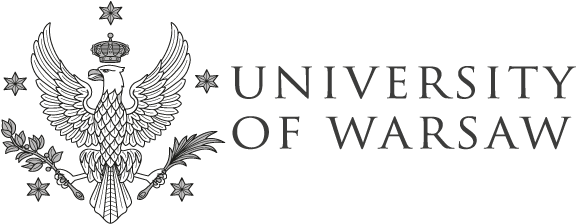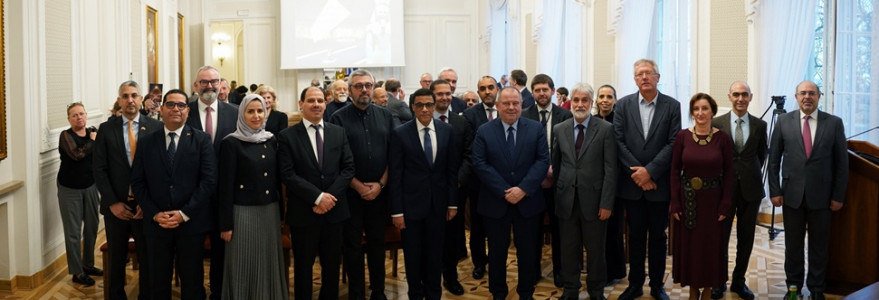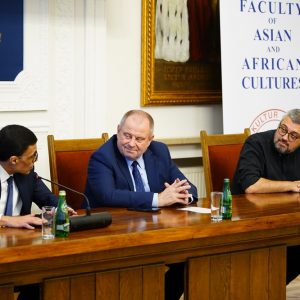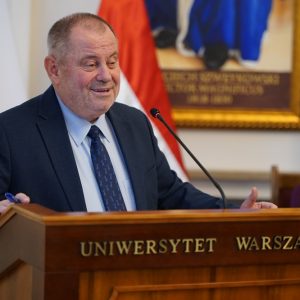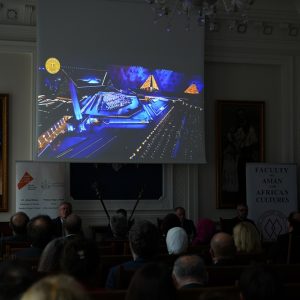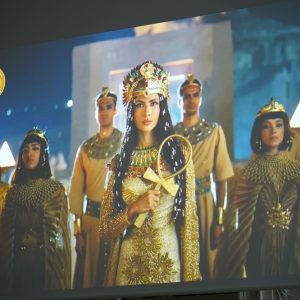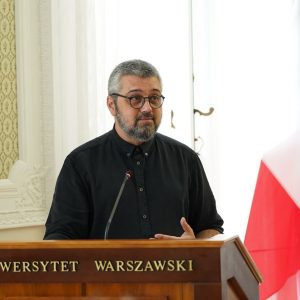On 3rd November, the University of Warsaw hosted a meeting to mark the inauguration of the Grand Egyptian Museum in Egypt, which houses, among others, the furnishings of Tutankhamun’s tomb. The event was attended by the UW Rector and the Egyptian ambassador to Poland. Participants had the opportunity to listen to a presentation on archaeological discoveries and watch a film about the museum’s inauguration.
The Grand Egyptian Museum (GEM) is located in Giza, 2 km from the pyramids of Cheops, Chephren and Mycerinus. Its construction began in 2002. It is currently one of the largest museums in the world and the largest museum presenting collections related to Ancient Egypt. It houses over 100,000 artefacts, some of which are over 5,000 years old. The museum’s collection includes the furnishings of Tutankhamun’s tomb.
“The opening of the Grand Egyptian Museum is an event of great importance for global science and culture. This place connects the past with the present and shows how the heritage of ancient Egypt inspires future generations of researchers. I am glad that at the University of Warsaw we were able to meet with representatives of the Egyptian Embassy and our scientists who have been conducting archaeological research in that country for years. Thanks to such meetings, we can develop cooperation and strengthen our ties,” said Prof. Alojzy Z. Nowak, Rector of the University of Warsaw.
The official opening of the museum took place on 1st November in Giza. On this occasion, a meeting was held on 3rd November in the Golden Hall of the Casimir Palace on the UW’s campus, during which the concept of the Egyptian project and the collections presented in the museum were discussed.
The meeting was attended by Prof. Alojzy Z. Nowak, the UW Rector, Ahmed ElAsnary, Ambassador of Egypt to Poland, representatives of the Faculty of Asian and African Studies, and invited guests.
Archaeological research by the University of Warsaw in Egypt was begun in the 1930s by Prof. Kazimierz Michałowski. It is continued today by the Faculty of Asian and African Studies, the Faculty of Archaeology and the Polish Centre for Mediterranean Archaeology at the UW. The research is conducted in all regions of Egypt and covers the entire history of the country: from the Pharaonic times, through the Christian period, to the Muslim period.
Presentations on the research conducted by scientists in Egypt were given by: Prof. Kamil Kuraszkiewicz from the Faculty of Asian and African Studies, who gave the audience an overview of the history of the discovery of ancient Egypt and briefly discussed the research conducted by the Faculty in Saqqara, and Prof. Sławomir Rzepka from the Faculty of Archaeology, who presented the discovery of the museum’s greatest treasure – the furnishings of Tutankhamun’s tomb in the Valley of the Kings.
During the meeting, a film about the opening of the Grand Egyptian Museum was shown.


